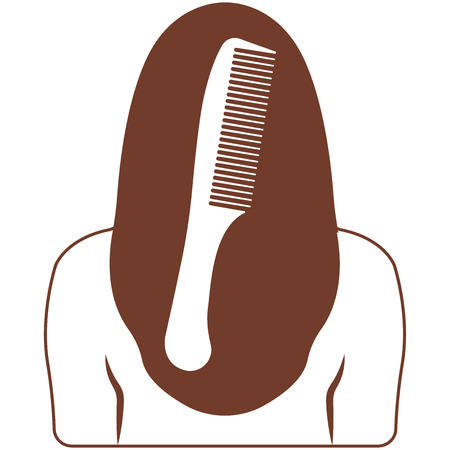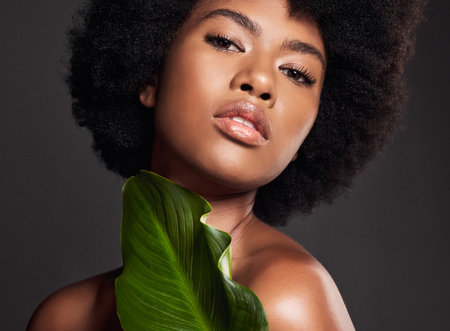Understanding Textured Hair Types
When it comes to dyeing textured and natural hair, understanding the different hair types is crucial for achieving beautiful, healthy results. In the United States, curly, coily, and kinky hair textures are celebrated for their unique beauty and versatility. Curly hair typically features defined S-shaped curls that can range from loose waves to tight ringlets. Coily hair, sometimes called type 4A or 4B, has a tighter curl pattern with springy coils or zig-zag shapes. Kinky hair, often classified as type 4C, is densely packed with tiny curls or zigzags and can appear almost cotton-like in texture.
How Texture Impacts Dyeing
The structure of textured hair means that each type responds differently to color treatments. Curly, coily, and kinky hair tends to be more porous than straight hair, which can make it absorb dye more quickly but also lose moisture faster. This increased porosity means that color may take more vibrantly but can also fade sooner if not properly cared for. Additionally, the bends and twists in textured strands create more surface area and potential weak points, making the hair more prone to dryness or breakage during chemical processes like dyeing.
Recognizing Your Unique Needs
No two heads of textured hair are exactly alike, so its important to recognize your own curl pattern and porosity level before reaching for the dye. Whether you have soft curls or tight kinks, these characteristics will influence everything from your choice of color products to how you prep and care for your hair before and after coloring. By taking the time to understand your specific texture, you set yourself up for vibrant color results without compromising the health of your beautiful natural hair.
2. Preparing Your Hair for Color
Dyeing textured and natural hair requires thoughtful preparation to protect your curl pattern and maintain healthy strands. Taking the right steps before you reach for that box dye or head to the salon can make all the difference in your results and hair health.
Deep Conditioning: Nourish Before You Color
Curly, coily, and kinky hair types are naturally drier and more fragile, so deep conditioning is a must before coloring. This helps strengthen the hair shaft, reduces the risk of breakage, and preps your curls to handle chemicals better. Try using a rich, hydrating mask at least two days before your color appointment. Focus on ingredients like shea butter, coconut oil, or avocado oil for maximum moisture.
Strand Tests: Prevent Surprises
Before applying color all over, always do a strand test—especially with textured hair. This simple step lets you preview how your hair will react to the dye and what the final shade will look like. To perform a strand test:
| Step | Description |
|---|---|
| Section Hair | Choose a small section of hair at the back or underneath. |
| Apply Color | Follow package instructions to apply dye to this section only. |
| Wait & Rinse | Leave on for recommended time, then rinse thoroughly. |
| Evaluate | Check color result and monitor hair texture/health. |
Choosing the Right Color: Go Gentle & Bold
Selecting the right shade is crucial for textured and natural hair. If it’s your first time coloring or if your hair is delicate, opt for semi-permanent or ammonia-free dyes—they’re less harsh and wash out gradually. When choosing a color, remember that highly porous or previously colored curls may grab pigment more intensely. If you’re unsure, consult a stylist who specializes in curly or natural hair for advice tailored to your unique texture.
Pro Tip: Consider Your Curl Pattern & Porosity
The tighter your curl pattern (think 4A-4C), the more prone your hair may be to dryness after dyeing. High-porosity hair absorbs color quickly but also loses moisture fast—so extra hydration is key!
Summary Table: Prepping Steps at a Glance
| Preparation Step | Why It Matters |
|---|---|
| Deep Condition | Strengthens and hydrates curls before chemical processing. |
| Strand Test | Avoids unexpected color results and checks for adverse reactions. |
| Select Gentle Dye | Lowers risk of damage; maintains healthy curl structure. |
| Consult a Pro (Optional) | Personalized advice for best results on textured/natural hair. |
Treating your curls with care before coloring sets the stage for vibrant, healthy results—so don’t skip these essential prep steps!

3. Choosing Safe Products and Ingredients
When it comes to dyeing textured or natural hair, picking the right products is essential for maintaining your curls’ health and vibrancy. Not all hair dyes are created equal, and textured hair—whether curly, coily, or kinky—can be more sensitive to harsh chemicals. That’s why it’s crucial to look for formulas specifically designed for delicate strands.
Ammonia-Free Dyes: A Gentler Option
If you’re worried about damage, ammonia-free dyes should be at the top of your list. Ammonia can lift the cuticle aggressively, leading to dryness and breakage in textured hair. Opt for ammonia-free options to reduce this risk while still achieving gorgeous color results.
Semi-Permanent vs. Permanent Dyes
Semi-permanent dyes are a popular choice for curly and coily hair because they coat the hair shaft rather than penetrating deeply. This means less structural damage and more moisture retention—two things your curls will thank you for. While permanent dyes can deliver longer-lasting results, they often contain stronger chemicals that may compromise the health of your natural texture.
How to Read Hair Dye Labels
Before buying any product, get into the habit of reading ingredient labels closely. Look for nourishing ingredients like shea butter, coconut oil, or aloe vera. Avoid products that list ammonia, peroxide, or alcohol high up on the ingredients list, as these can strip moisture and weaken your strands. Also, check for phrases like “for textured hair” or “curl-friendly,” which indicate formulas tailored to your needs.
By being mindful of what you put on your curls, you’ll help ensure both beautiful color and healthy hair with every dye job.
4. Color Application Techniques
Applying hair color to textured and natural hair requires a thoughtful approach to ensure even coverage, minimize damage, and achieve vibrant results. Curly, coily, and kinky hair types are naturally more fragile and porous, so its crucial to use methods that protect the hair’s integrity while delivering beautiful color. Here are some expert tips and techniques for successful at-home or salon dyeing.
Sectioning for Success
One of the most important steps in coloring textured hair is sectioning. Dividing your hair into smaller, manageable sections helps ensure every strand gets coated evenly. Use plastic clips to separate your hair into 4-8 sections depending on thickness and length. Work with one section at a time to prevent overlapping and missed spots.
Application Tools Matter
Choosing the right tools can make a big difference in application. While applicator bottles are popular, a tint brush offers greater precision for curly and coily textures. Brushes help you work the dye into the curls and coils without disrupting their pattern or causing frizz.
Saturate for Evenness
Textured hair often requires more product than straight hair due to its density and curl pattern. Make sure to fully saturate each section from root to tip, gently working the dye through with your fingers (wear gloves!) or a wide-tooth comb to distribute color evenly without rough handling.
Quick Reference: Application Tips by Hair Type
| Hair Type | Recommended Sectioning | Best Application Tool |
|---|---|---|
| Curly (Type 3) | 4-6 sections | Tint brush & hands |
| Coily (Type 4A/4B) | 6-8 sections | Tint brush & wide-tooth comb |
| Kinky (Type 4C) | 8+ small sections | Tint brush & hands for control |
Protect Your Scalp and Edges
The scalp and hairline can be sensitive, especially if you have tighter curls or coils. Before applying color, coat your edges and ears with petroleum jelly or a thick conditioner to create a barrier against staining and irritation.
Minimize Damage During Application
Avoid overlapping previously colored hair unless necessary for touch-ups. Overlapping can cause unnecessary dryness and breakage. Always follow the recommended processing time on your product instructions—leaving dye on longer won’t intensify color but may increase damage.
By using these targeted techniques tailored for textured hair, you’ll get vibrant, consistent results while maintaining the health of your beautiful curls, coils, or kinks.
5. Caring for Dyed Textured Hair
Prioritize Moisture to Combat Dryness
Coloring curly, coily, and kinky hair can lead to dryness if not cared for properly. After dyeing, it’s essential to establish a solid moisturizing routine. Use sulfate-free shampoos and rich, hydrating conditioners specifically formulated for color-treated hair. Deep conditioning treatments should be done weekly to replenish lost moisture and help maintain your hair’s elasticity and shine.
Protective Styles to Minimize Breakage
After coloring, your hair may be more prone to breakage, so protective styles like braids, twists, buns, or bantu knots are great options. These styles reduce manipulation and shield your ends from environmental stressors, helping retain length and prevent split ends. Be gentle when styling, and avoid tight hairstyles that can cause tension on your edges or scalp.
Choose Products Tailored for Color-Treated Natural Hair
Invest in products designed specifically for dyed textured hair. Look for leave-in conditioners, oils, and creams that offer UV protection and contain nourishing ingredients like shea butter, coconut oil, or argan oil. Avoid products with harsh alcohols or sulfates as they can strip color and moisture from your strands.
Nighttime Care Is Key
At night, protect your colored curls by sleeping on a satin or silk pillowcase or using a satin bonnet or scarf. This reduces friction while you sleep, helping your hair retain moisture and color vibrancy.
Stay Consistent With Your Routine
Caring for dyed natural hair is all about consistency. Stick to your moisturizing regimen, minimize heat styling, and trim regularly to keep your curls healthy and vibrant long after coloring.
6. Common Mistakes to Avoid
Overprocessing with Bleach or Dye
One of the biggest pitfalls when coloring curly, coily, or kinky hair is overprocessing. Textured hair is naturally more fragile and susceptible to damage from harsh chemicals. Avoid bleaching your hair too frequently or leaving color on for longer than recommended, as this can lead to excessive dryness, breakage, and even permanent texture loss. Always follow timing instructions and opt for professional help if you’re making a major color change.
Skipping Strand and Patch Tests
It’s tempting to jump right into coloring, but skipping strand and patch tests can set you up for disaster. A strand test helps you preview how your curls will react to the dye and ensures you’ll get the desired shade without unexpected results. A patch test checks for allergic reactions. Take the time for both—your hair and scalp will thank you.
Neglecting Deep Conditioning
Dyeing textured hair without prepping it with moisture is a recipe for dryness and brittleness. Don’t forget regular deep conditioning treatments before and after coloring. These restore lost hydration, strengthen your curls, and help maintain both hair health and vibrant color.
Using Harsh Shampoos Post-Coloring
After coloring, many reach for their usual shampoo—but using harsh, sulfate-based cleansers can strip away both moisture and color. Switch to gentle, sulfate-free shampoos specifically formulated for color-treated hair. This small change helps lock in your new hue while keeping your natural texture soft and defined.
Ignoring Professional Advice
DIY dye jobs are popular, but not all box dyes are created equal—especially for textured hair. If you’re unsure about technique or product choice, consult a stylist who specializes in curly or natural hair. Their expertise can prevent costly mistakes and ensure stunning, healthy results.
Safeguarding Your Hair Investment
Avoiding these common mistakes not only preserves your curl pattern but also extends the life of your color. With mindful care, you can keep your textured or natural hair looking vibrant, healthy, and uniquely beautiful long after dye day.

